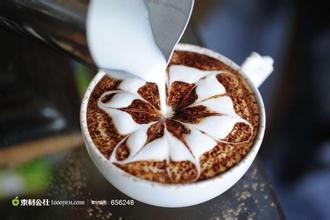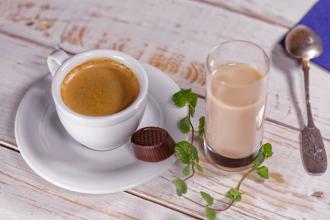Introduction to the characteristics of Guatemala Antigua Coffee Flavor Coffee with excellent sweetness
The leftist guerrillas throughout the country merged to form the "National Revolutionary Alliance of Guatemala", and armed struggle spread throughout the country. Farmers dissatisfied with the overthrow of the Arbens regime organized a guerrilla group in which more than 100,000 people were killed and millions displaced. In September 1982, the persecution of the local Mayans by the Guatemalan army was close to genocide, and more than 9000 Mayans were killed. Since 1983, persecution on the part of the Government of Guatemala began to decrease and the country began to democratize again. However, the disparity between the rich and the poor has not been solved, and only a small number of people who account for 1% own more than 60% of the arable land and wealth. In 1985, Guatemala reorganized the general election. Guatemala is located in the tropics. The northern and eastern coastal plains have a tropical rain forest climate, while the southern mountains have a subtropical climate. The year is divided into two dry and wet seasons, with the wet season from May to October and the dry season from November to April of the following year. The narrow and fertile flatlands on the Pacific side of Guatemala have a tropical climate. The central plateau is also the cultural center of Guatemala, where temperatures are mild all year round at an altitude of 1300 to 1800 meters, with daily temperatures between 18 and 28 ℃, and higher levels tend to be colder in January and February. The annual precipitation of 2000-3000 mm in the northeast and 3000-1000 mm in the south are surrounded by the three majestic volcanoes Agua, Acatenango and Fuego. Every once in a while, Fuego-- one of Guatemala's three active volcanoes adds fresh, mineral-rich ash to the soil of Antigua. The volcanic pumice in the soil can keep the soil moist, greatly making up for the lack of precipitation in Antigua, which is the least rainy of the eight coffee-producing regions in Guatemala.
Like all Guatemalan boutique coffee, Antigua coffee is grown in shade. In Antigua, shade is mainly used to protect coffee trees from frost, which is cold and sometimes frosty from December to February every year. Dense shade and extremely shallow aquifers work together to create a unique micro-climate for the coffee trees living in it.
Cup reviews of Antigua coffee:
Aroma 7.8; flavor 7.85; acidity 7.95; balance 7.63; overall 7.78; alcohol 7.85; aftertaste 7.60
Delicate, well-balanced, rich aroma and excellent sweetness Antigua Valley (Antigua Valley) is the oldest and best-known coffee producing area in Guatemala. Volcanoes and extremely shallow groundwater levels form a dry microclimate, characterized by low humidity, adequate sunshine and cool nights.
Antigua is a closed valley surrounded by three volcanoes: Agua, Acatenango and Fuego. Antigua is flat and slightly sloping, unlike other coffee producers located in volcanic areas.
Most coffee trees are planted in the hinterland of the valley, but even so, they have reached an altitude of 5000 feet; in addition, some farmers grow coffee on the slopes of volcanoes, nearly 5600 feet above sea level.
The extremely high content of pumice (pumice) in the soil of Antigua (from the active Fuaigo volcano Fuego) keeps the humidity stable at 65% all the year round, which is very different from other volcanic coffee producing areas, where the humidity usually varies greatly between the dry and wet seasons.
With fertile volcanic soil, low humidity, plenty of sunshine and cool nights, all of these elements make up the unique "Antigua flower god" of the Antigua region, which comes from the high altitude in the center of the volcanic area of Antigua. Costa Rica's famous Raminita estate provides the industry's highest standard of planting and processing technology, and directly sends special personnel to Antigua to participate in quality control, and entrusts Antigua's largest Bastol washing treatment plant (Pastores mill) with the highest standard of post-harvest treatment, under the supervision of raw bean handling and cup testing control by Raminita quality control personnel. A strict procedure has been established from the purchase of coffee berries to washing, drying and drying, so it is not surprising that this coffee has an outstanding performance.

Important Notice :
前街咖啡 FrontStreet Coffee has moved to new addredd:
FrontStreet Coffee Address: 315,Donghua East Road,GuangZhou
Tel:020 38364473
- Prev

Introduction to the flavor and taste of the strong and sour coffee plantation in Jinchu Valley, Kenya.
Kenya comes from the Enbu processing Plant (Embu Washing Station) in the Gichugu producing area. It grows in Manyata-Enbu County on the eastern slopes of the Kenyan Mountains from 1550 to 1750. The variety is Kenya's classic SL28,SL34, coupled with the large temperature difference between day and night in the deceived area, and the red phosphate soil in Kenya, which makes the sweet and sour become this Kenyan.
- Next

Introduction to the characteristics of Panamanian Coffee Manor with various flavors
Panama is located in the isthmus of Panama in Central America, bordered by Colombia to the east, the Pacific Ocean to the south, the map of Panama to Costa Rica to the west and the Caribbean Sea to the north. The territory is S-shaped to connect North and South America, and the Panama Canal connects the Atlantic and Pacific oceans from north to south. It is known as the bridge of the world. [5] Panama has a land area of 75517 square kilometers.
Related
- Detailed explanation of Jadeite planting Land in Panamanian Jadeite Manor introduction to the grading system of Jadeite competitive bidding, Red bid, Green bid and Rose Summer
- Story of Coffee planting in Brenka region of Costa Rica Stonehenge Manor anaerobic heavy honey treatment of flavor mouth
- What's on the barrel of Blue Mountain Coffee beans?
- Can American coffee also pull flowers? How to use hot American style to pull out a good-looking pattern?
- Can you make a cold extract with coffee beans? What is the right proportion for cold-extracted coffee formula?
- Indonesian PWN Gold Mandrine Coffee Origin Features Flavor How to Chong? Mandolin coffee is American.
- A brief introduction to the flavor characteristics of Brazilian yellow bourbon coffee beans
- What is the effect of different water quality on the flavor of cold-extracted coffee? What kind of water is best for brewing coffee?
- Why do you think of Rose Summer whenever you mention Panamanian coffee?
- Introduction to the characteristics of authentic blue mountain coffee bean producing areas? What is the CIB Coffee Authority in Jamaica?

